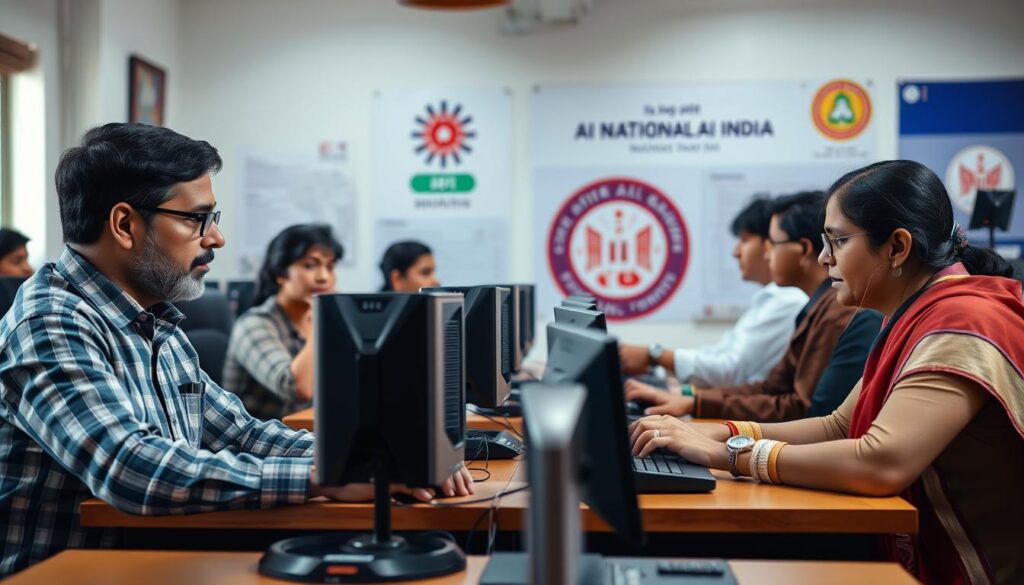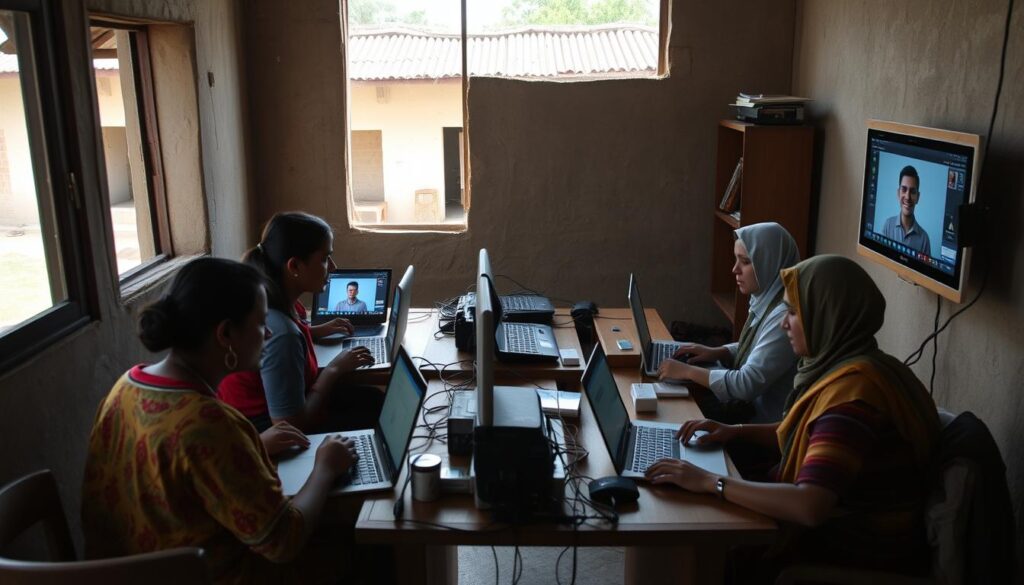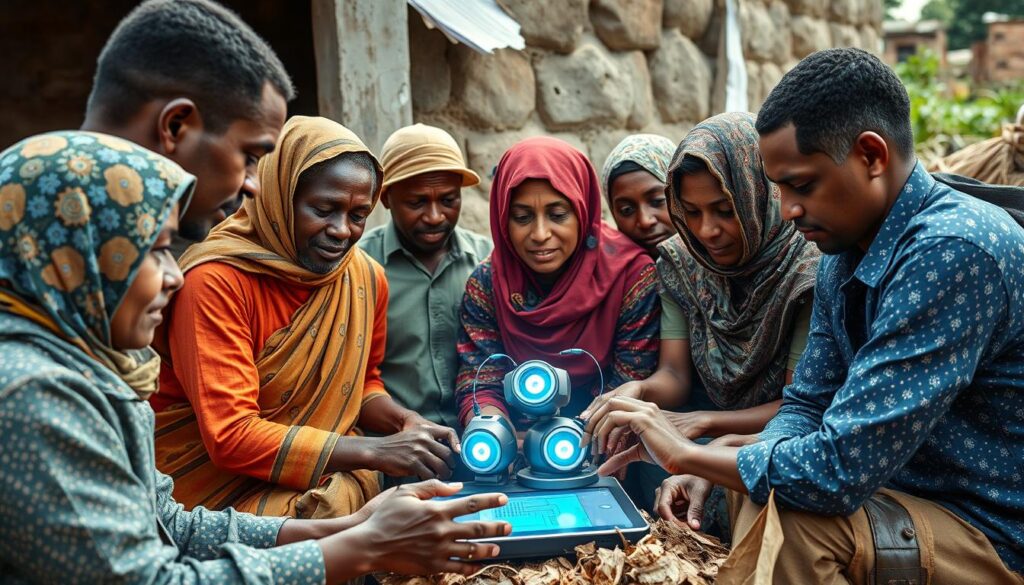Recent research suggests AI’s effects on jobs will be more gradual in the Global South, particularly in low-income countries. This presents both challenges and opportunities as nations navigate technological advancement while pursuing inclusive economic growth.
AI Exposure Across Different Economies
AI exposure varies significantly by country income level, with developing nations showing lower overall exposure rates.
Workers in low-income countries experience significantly lower AI exposure than those in high-income countries. According to World Bank research analyzing data from 25 countries covering 3.5 billion people, jobs in developing economies are less susceptible to immediate AI disruption.
This difference stems from several factors. Developing countries have more jobs involving manual labor or interpersonal interaction – work that’s less amenable to current AI capabilities. Limited access to reliable electricity and internet infrastructure further constrains AI adoption in many regions.
The distribution of AI occupation exposure shows the greatest concentration of workers globally is in occupations with medium-low levels of AI exposure, such as motor vehicle mechanics and agricultural workers.
Positive Impacts of AI on Employment in Developing Countries

AI applications are helping farmers in countries like Kenya optimize crop production through predictive analytics.
Productivity Enhancements in Traditional Industries
In many developing countries, AI is boosting productivity in traditional sectors rather than replacing workers. In agriculture, AI-powered applications help farmers optimize crop production, predict weather patterns, and manage resources more efficiently.
For example, in Kenya, AI systems analyzing satellite imagery and weather data have helped small-scale farmers increase yields by up to 30% through better planting timing and resource allocation. These technologies augment rather than replace human labor.
New Job Creation in AI-Adjacent Fields
The growth of AI is creating entirely new job categories in developing economies. Data annotation, a crucial process for training AI systems, has become a significant employment sector in countries like India, Kenya, and the Philippines.
These roles leverage the competitive advantage of lower labor costs while providing digital skills development. Companies like Samasource have created thousands of jobs in East Africa specifically focused on AI data preparation and validation.

Data annotation centers in countries like India are creating new employment opportunities in the AI supply chain.
Bridging Human Capital Gaps
AI has the potential to address critical service gaps in developing countries. In healthcare, AI diagnostic tools are extending the reach of limited medical professionals. In education, AI-powered learning platforms are helping overcome teacher shortages in rural areas.
These applications create jobs for local facilitators and technicians while improving essential services. Rather than replacing professionals, AI often enables them to serve more people more effectively.
Challenges and Disruptions from AI Adoption

Automation in Bangladesh’s garment industry threatens traditional manufacturing jobs.
Job Displacement in Vulnerable Sectors
Despite overall lower AI exposure, certain sectors in developing countries face significant disruption. Call centers in the Philippines and India, which employ millions, are particularly vulnerable as conversational AI improves. Similarly, manufacturing jobs in countries like Bangladesh are threatened by increasing automation.
A case study from Bangladesh’s garment industry shows how automated cutting and sewing systems have reduced workforce needs by up to 20% in factories that have adopted these technologies. Workers with limited education and transferable skills face particular challenges in transitioning to new roles.
The Digital and Skills Divide
Limited digital infrastructure and AI literacy create barriers to beneficial AI adoption in many developing regions. Only about 10% of jobs in East Asia and Pacific involve tasks complementary to AI, compared to 30% in advanced economies.
This skills gap threatens to widen existing inequalities. Workers with higher education levels show greater ability to transition from high-risk to high-complementarity positions, while those with limited education often struggle to adapt.

The digital divide between urban and rural areas affects AI adoption and benefits distribution.
Demographic Differences in AI Impact
Research highlights important demographic variations in AI exposure. In high and upper-middle-income countries, women tend to have higher AI exposure than men. However, this gender gap is less pronounced in lower-income countries.
Age-related differences also vary by development level. In wealthier nations, older workers face the highest AI disruption risk, while age-related differences in AI exposure are minimal in developing economies.
The Role of Governments and Organizations

Government-led reskilling programs like India’s “AI for All” initiative are preparing workers for changing job markets.
Policy Approaches for AI Readiness
Governments in developing countries are implementing various strategies to prepare their workforces for AI transformation. India’s “AI for All” initiative aims to provide basic AI literacy to millions of citizens, while Malaysia has established public-private partnerships to retrain workers in industries facing automation.
Effective policies focus on three key areas:
Infrastructure Development
Expanding reliable electricity and internet access, particularly in rural areas, to enable beneficial AI adoption.
Education Reform
Updating curricula to emphasize digital skills, critical thinking, and social-emotional capabilities that complement rather than compete with AI.
Social Protection
Creating safety nets and transition support for workers displaced by automation, including portable benefits for gig workers.
Ethical Considerations and Labor Rights
As AI reshapes employment, ethical frameworks become increasingly important. Organizations like the International Labour Organization are developing guidelines for responsible AI adoption that respects worker rights and promotes inclusive growth.
Key considerations include transparency in AI implementation, fair compensation for data workers, and inclusive decision-making that involves affected communities in technology planning.

Multi-stakeholder approaches to AI governance help ensure ethical implementation that respects labor rights.
Future Outlook: AI and Employment by 2030

By 2030, AI-human collaboration models are expected to emerge that balance technological advancement with inclusive employment.
Projected Trends and Scenarios
Experts project several potential scenarios for AI’s impact on developing countries’ labor markets by 2030:
Optimistic Scenario
- AI adoption increases productivity while creating more jobs than it displaces
- Digital infrastructure expands, enabling broader participation in AI benefits
- Education systems successfully adapt to prepare workers for AI-complementary roles
- New job categories emerge that leverage uniquely human capabilities
Challenging Scenario
- Automation displaces workers faster than new opportunities emerge
- Digital divide widens, concentrating AI benefits among urban and educated populations
- Skills gaps prevent workers from transitioning to new roles
- Increasing inequality between AI-ready and AI-vulnerable communities
Balancing Technological Advancement with Inclusive Growth
The most likely outcome lies between these extremes and will vary significantly by country, depending on policy choices and implementation. Countries that prioritize AI augmentation over automation, invest in digital infrastructure, and develop inclusive skills programs are likely to see more positive outcomes.
The window of opportunity created by developing countries’ lower immediate AI exposure provides valuable time to implement thoughtful transition strategies. With proactive policies, these nations can harness AI to empower workers rather than displace them.

Rural digital hubs can help bridge the urban-rural divide and distribute AI benefits more equitably.
Assess Your Organization’s AI Readiness
Understanding how AI will affect your workforce is the first step toward successful adaptation. Our AI Readiness Assessment Tool helps organizations in developing countries evaluate their exposure, identify opportunities, and develop strategic responses.
Conclusion: Proactive Strategies for an AI-Transformed Future

Collaborative approaches to AI integration can maximize benefits while minimizing disruption.
AI’s impact on jobs in developing countries presents a complex picture of both opportunity and challenge. While these nations generally face lower immediate AI exposure than advanced economies, the effects vary significantly by sector, region, and worker demographics.
The key insight from current research is that AI’s impact on developing economies will likely be more gradual, creating a valuable window for preparation. This time advantage should be used strategically to implement policies that maximize AI’s benefits while mitigating its disruptive effects.
Successful approaches will likely include expanding digital infrastructure, prioritizing AI applications that enhance rather than replace human work, leveraging AI to address critical service gaps, and developing inclusive skills programs that prepare workers for an AI-transformed economy.
By taking proactive steps now, developing countries have the opportunity to shape how AI affects their labor markets, potentially leapfrogging traditional development stages to create more productive, inclusive economies.







